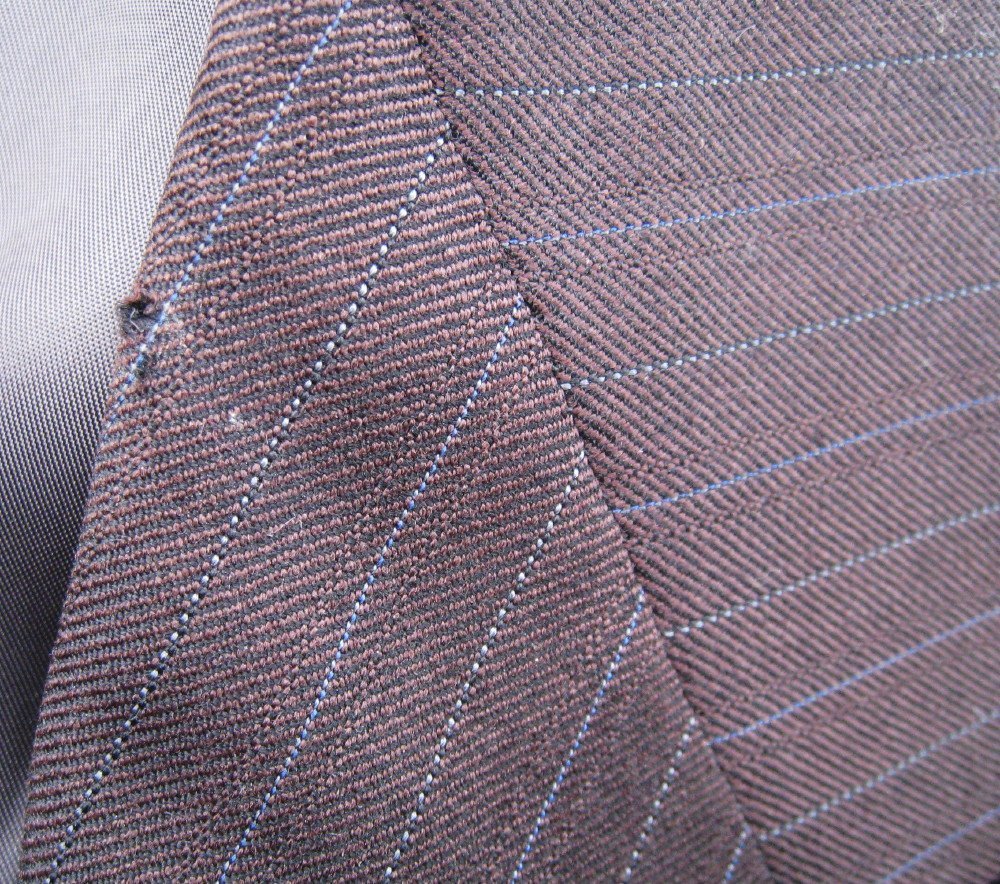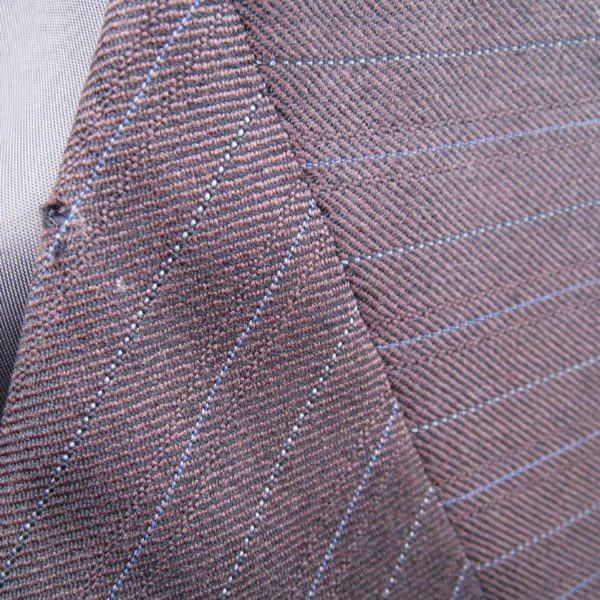
Craig asks: I recently developed a small tear on the right side of my suit pants, and the place that made the suit no longer has the original fabric, so I can’t have another pair made (the suit was custom). Is there anything I can do besides throw these away? I’m open to anything, but would like to not throw good money after bad.
One of the biggest myths about expensive clothes is that they’ll last you a lifetime. Some things last a while, to be sure, but no matter how well made, anything can develop a hole, snag, or tear. When these things happen with suits or sport coats, the best solution is usually to have the fabric “rewoven.”
That can mean one of two things. The first is what’s known as French reweaving or invisible reweaving, where individual strands of thread are woven into the original cloth. It’s sort of like what I recently had done on my sweater. In this way, the new threads are “filling in” the hole.
The other technique is known as overweaving or inweaving. Here, a small patch is used to cover up the hole or tear, and then the frayed edges are woven into the suit in order to help conceal the patch. As you can guess, French reweaving tends to be good for small holes or tears, while inweaving is good for anything that’s too big to easily “fill.”
Note, any kind of repair can be seen if you look hard enough. The question is just how well it can be made to look “invisible.” Often times, such are repairs are very, very good and will be hard to detect, but a lot depends on the damage and fabric at hand. Generally speaking:
- Darker colors are easier to work with, although for some reweavers, black is the hardest of all.
- The finer the weave, the more difficult it is to repair (no surprise).
- Solids are typically easier to work with than patterns, but a lot depends on the type of pattern that’s being compared.
- Anything with synthetics will be hard to work with, if not impossible.
You mentioned that you had the suit custom made. In such cases, it’s sometimes a good to keep a little extra of the cloth, just for situations like this. Otherwise, the reweaver will have to take material from an inconspicuous place on your suit, or try to find a closely matching material somewhere on the market. Sometimes your tailor will keep a little extra of the original cloth (even if it’s not enough for a new pair of pants) and have a reweaver he or she can recommend. It’s best to check with them. Otherwise, search around for a reweaver. For what it’s worth, I’ve had good experiences sending sport coats to Best Weaving & Mending, and sending knitwear to The French American Reweaving Company.








